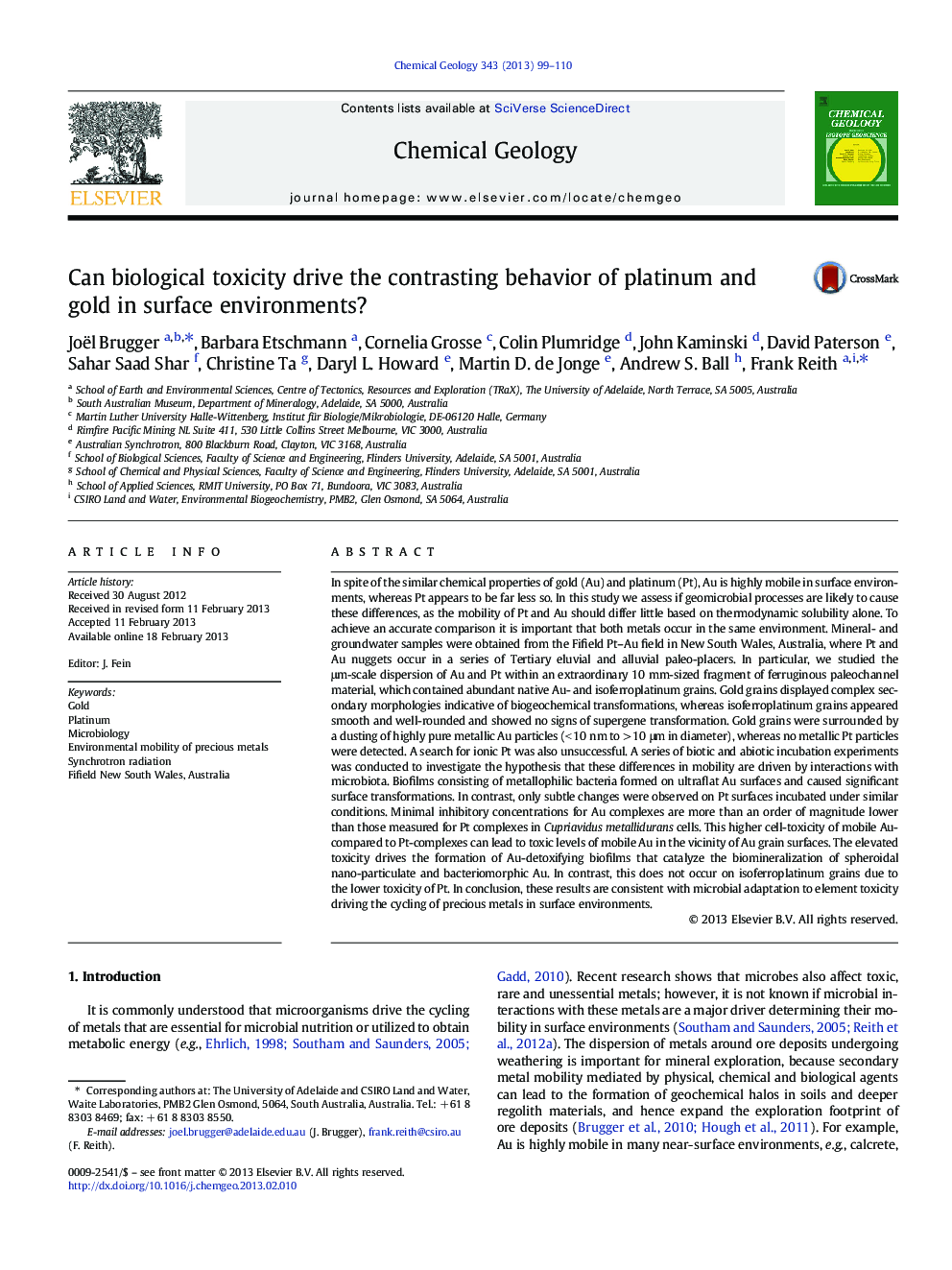| کد مقاله | کد نشریه | سال انتشار | مقاله انگلیسی | نسخه تمام متن |
|---|---|---|---|---|
| 4699001 | 1637625 | 2013 | 12 صفحه PDF | دانلود رایگان |
In spite of the similar chemical properties of gold (Au) and platinum (Pt), Au is highly mobile in surface environments, whereas Pt appears to be far less so. In this study we assess if geomicrobial processes are likely to cause these differences, as the mobility of Pt and Au should differ little based on thermodynamic solubility alone. To achieve an accurate comparison it is important that both metals occur in the same environment. Mineral- and groundwater samples were obtained from the Fifield Pt–Au field in New South Wales, Australia, where Pt and Au nuggets occur in a series of Tertiary eluvial and alluvial paleo-placers. In particular, we studied the μm-scale dispersion of Au and Pt within an extraordinary 10 mm-sized fragment of ferruginous paleochannel material, which contained abundant native Au- and isoferroplatinum grains. Gold grains displayed complex secondary morphologies indicative of biogeochemical transformations, whereas isoferroplatinum grains appeared smooth and well-rounded and showed no signs of supergene transformation. Gold grains were surrounded by a dusting of highly pure metallic Au particles (< 10 nm to > 10 μm in diameter), whereas no metallic Pt particles were detected. A search for ionic Pt was also unsuccessful. A series of biotic and abiotic incubation experiments was conducted to investigate the hypothesis that these differences in mobility are driven by interactions with microbiota. Biofilms consisting of metallophilic bacteria formed on ultraflat Au surfaces and caused significant surface transformations. In contrast, only subtle changes were observed on Pt surfaces incubated under similar conditions. Minimal inhibitory concentrations for Au complexes are more than an order of magnitude lower than those measured for Pt complexes in Cupriavidus metallidurans cells. This higher cell-toxicity of mobile Au- compared to Pt-complexes can lead to toxic levels of mobile Au in the vicinity of Au grain surfaces. The elevated toxicity drives the formation of Au-detoxifying biofilms that catalyze the biomineralization of spheroidal nano-particulate and bacteriomorphic Au. In contrast, this does not occur on isoferroplatinum grains due to the lower toxicity of Pt. In conclusion, these results are consistent with microbial adaptation to element toxicity driving the cycling of precious metals in surface environments.
► Gold mobility and Pt mobility differ drastically in placers at Fifield, Australia.
► Gold- but not Pt-, nano- and micro-particles are dispersed in adjacent materials.
► Gold nano-particles are drivers of Au dispersion in semi-arid environments.
► Bacteria behave differently to mobile complexes- and metallic surfaces of Au and Pt.
► The different mobility is likely driven by biotoxicity and not chemical solubility.
Journal: Chemical Geology - Volume 343, 8 April 2013, Pages 99–110
